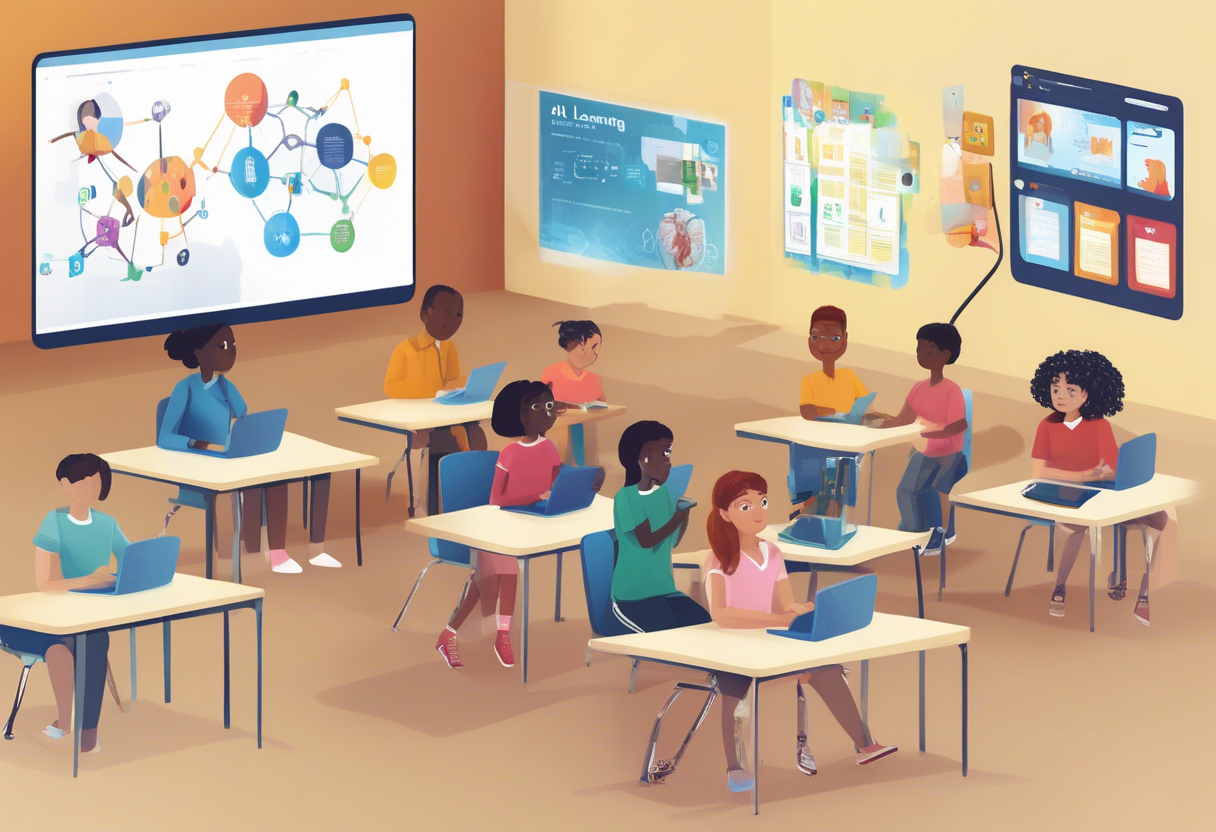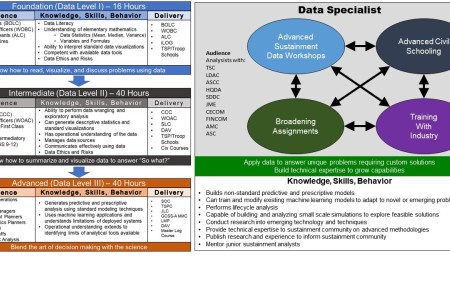
In the quick-moving world of business, one smart move can keep you ahead: upskilling your team. Did you know 87% of executives feel there's a skills gap in their companies? This shows how important it is to focus on helping your employees grow. When you upskill, you give your team the latest skills and knowledge, and you also set your company up for success in a tough market. In this article, we'll guide you on how to upskill your workforce step by step. Turn challenges into chances for innovation and success. Let's see how you can secure your business's future by developing your most valuable resource—your people!
Step-by-Step Guide to Upskilling Your Workforce
Conduct a Skills Gap Analysis for Upskilling
Assess current employee skills versus the skills needed for future roles and organizational goals.
Starting with a skills gap analysis is key to boosting your workforce's skills. This step shows where your employees might need some extra training and helps you focus your efforts on the right areas. Here's how you can conduct a thorough skills gap analysis:
- Surveys and Interviews: Gather insights directly from employees to understand their current skill levels.
- Skill Assessments: Evaluate employees' skills through tests or practical assessments.
- Job Descriptions vs. Industry Standards: Compare existing job roles with industry standards to identify areas for improvement.
- Technology Tools: Utilize workforce analytics and AI to map out current skills and future needs. These tools highlight individual gaps and suggest personalized learning paths, ensuring your training supports organizational growth.

For example, if surveys and assessments reveal a lack of advanced data analytics skills, prioritize training in that area to meet future business demands.
Partner with Educational Institutions and Online Platforms for Workforce Upskilling
Collaborate with universities, training providers, and platforms like Coursera for Business to provide access to relevant courses.
Teaming up with educational institutions and online platforms can significantly enhance your upskilling plans. Consider the following partnerships:
- Universities and Training Providers: Collaborate with local universities to offer specialized courses.
- Online Platforms: Use platforms like Coursera for Business to provide flexible learning options and recognized certifications.

These partnerships make upskilling a smart investment and can improve employee retention and performance. For instance, partner with a local university and Coursera to offer courses in cybersecurity and AI, addressing critical skills gaps identified through analysis.
Design and Implement Targeted Training Programs for Workforce Skills
Develop or select courses focused on identified skill gaps, such as digital skills, cybersecurity, data analytics, or industry-specific competencies.
Creating focused training programs is crucial for making your upskilling efforts count. Here’s how to design effective programs:
- Course Selection: Pick or design courses that address specific skill gaps, like digital skills or industry-specific needs.
- Microlearning: Incorporate short, focused sessions to make learning easier and more engaging.
- Personalized Learning Paths: Tailor learning paths to individual needs to boost engagement and effectiveness.
- Just-in-Time Learning: Provide training when it’s most needed to improve skill retention and application.
For example, set up a microlearning program with personalized modules on data analytics and cybersecurity, allowing employees to learn in short, relevant sessions.
Leverage Technology to Personalize Workforce Learning
Use AI-driven learning platforms to tailor content to individual employee needs, increasing engagement and effectiveness.
Enhance your upskilling initiatives by using technology to personalize learning. Consider these strategies:
- AI-Driven Platforms: Tailor content to fit each employee's needs by analyzing their skill gaps and learning preferences.
- Tech Infrastructure: Ensure a solid tech infrastructure to deliver scalable and adaptable learning.

For instance, an AI-powered platform can offer personalized course recommendations and adaptive learning paths based on an employee’s skills and career goals.
Incentivize Workforce Learning and Skill Acquisition
Offer tuition reimbursement, certifications, career advancement opportunities, or promotions linked to successful upskilling.
Motivating employees to engage in upskilling is crucial, and incentives can help. Consider these options:
- Tuition Reimbursement and Certifications: Encourage participation by offering financial support and recognized credentials.
- Career Advancement Opportunities: Link promotions or salary increases to successful upskilling efforts.
For example, employees who complete a cybersecurity certification through a company-sponsored program might get a salary bump and promotion eligibility.
Encourage Peer Learning and Mentoring for Workforce Development
Implement peer coaching and mentoring programs to facilitate knowledge sharing and practical skill development.
Support formal training with peer learning and mentoring. Here’s how:
- Peer Coaching: Allow employees to learn from each other in a supportive setting.
- Mentoring Programs: Pair experienced employees with newer hires to aid skill development and real-world application of training content.
This collaborative learning environment helps everyone grow together, strengthening the organization's overall skill set.
Integrate Upskilling into Workforce Strategy
Make upskilling a continuous and strategic priority aligned with business goals and future workforce trends.
Ensure long-term adaptability and competitiveness by making upskilling part of your workforce strategy. Consider these approaches:
- Strategic Alignment: Align upskilling with business goals and future trends to adapt to changes and seize new opportunities.
- Executive Support: Treat upskilling as a strategic investment to encourage leadership backing.
For example, include upskilling initiatives in annual business plans with clear KPIs linked to growth and innovation.
Use Data to Inform and Optimize Workforce Learning Programs
Collect and analyze learning data to refine training content, delivery methods, and identify emerging skill needs.
Using data to shape and improve learning programs is vital for ongoing success. Here’s how to leverage data:
- Data Collection and Analysis: Gather data on participation, skill improvements, and business outcomes.
- Program Refinement: Use insights to refine content, delivery methods, and spot emerging skill needs.

For instance, HR might use learning analytics to spot low engagement in a course and adjust content to better fit employee preferences.
Promote a Culture of Lifelong Learning in the Workforce
Foster an organizational culture that values continuous development and adaptability to change.
Encourage a culture of lifelong learning to motivate employees to take charge of their learning. Consider these tactics:
- Celebrate Achievements: Publicly recognize learning milestones to reinforce the importance of growth.
- Manager Support: Encourage managers to support ongoing development efforts.
By valuing continuous development and adaptability, employees are motivated to seek new opportunities.
Monitor Progress and Measure Impact of Workforce Upskilling
Track employee participation, skill improvements, and business outcomes to evaluate the success of upskilling initiatives and adjust as needed.
Monitoring progress and measuring impact is crucial for upskilling success. Here’s how to track effectiveness:
- Regular Evaluation: Assess participation rates, skill gains, and business metrics like productivity or retention.
- Strategy Tweaks: Use findings to tweak strategies for better outcomes.
For example, quarterly reviews might assess skill improvements and link them to performance metrics to justify continued investment.
By following these steps to upskill your workforce, you ensure your organization is ready for future challenges and opportunities. From analyzing skills gaps to designing and implementing training programs, each step is crucial for building a skilled, adaptable workforce. By using technology, offering incentives, and fostering a culture of learning, you create an environment where employees can grow and succeed.
FAQ
Effective Upskilling Programs for Employee Retention
Upskilling programs can significantly enhance employee retention by offering clear career paths and ongoing skill development. This not only makes jobs more satisfying but also boosts motivation. When training is paid and conducted during work hours, participation becomes easier for employees. Upskilling addresses a major reason for employee turnover: the lack of growth opportunities. Programs that encourage continuous learning and provide specific learning opportunities elevate morale and engagement, ultimately boosting retention.
For example, a tech company implemented a structured upskilling program with paid training during work hours and defined career growth paths, resulting in a 30% reduction in employee turnover within a year.

Tailoring Upskilling Programs to Industry Needs
To tailor upskilling programs for various industries, focus on both the technical and soft skills required for evolving job roles. In tech-heavy sectors, programs should address current skill gaps with training aligned with industry trends. Utilizing skills data can identify specific skill shortages, enabling the creation of customized upskilling plans.
Offering flexible training options, such as online courses, mentoring, and hands-on projects, accommodates diverse work environments. For instance, a manufacturing company used skills data to identify gaps in automation and robotics, creating a blended learning program with e-learning and on-site workshops to enhance their workforce.
Technology's Impact on Upskilling Workforce Initiatives
Technology plays a crucial role in making upskilling scalable and flexible. Online platforms allow employees to learn at their own pace. Talent marketplaces and skills data assist in mapping skills, identifying gaps, and creating personalized learning paths. Advanced analytics and AI tools provide targeted recommendations and track learning outcomes.
Moreover, technology supports mentorship and networking through virtual platforms, broadening professional connections and facilitating knowledge sharing. For example, a global company utilized an AI-powered talent marketplace to assess skills and recommend personalized courses, which increased engagement and accelerated skill acquisition.

Upskilling Definition and Examples
Benefits of Upskilling
Employee Upskilling
Importance of Upskilling